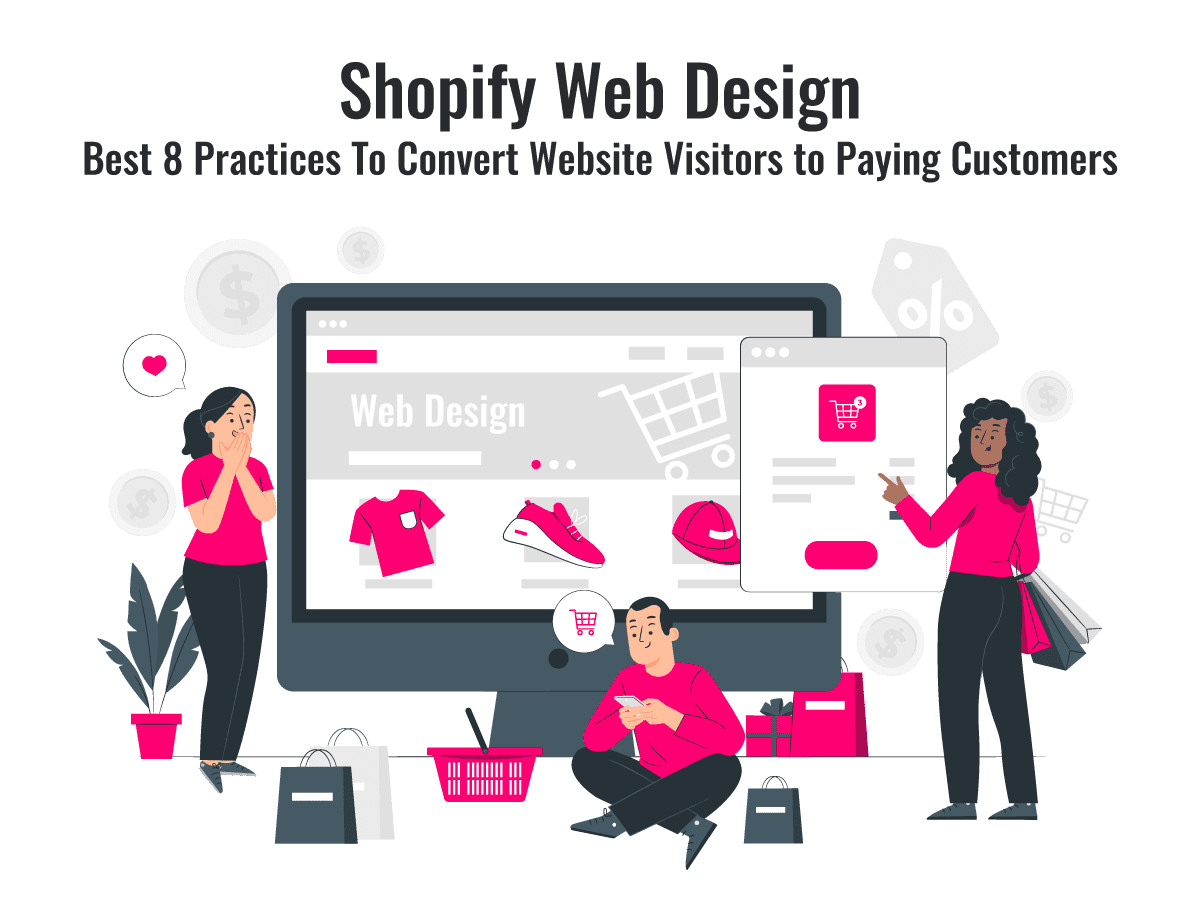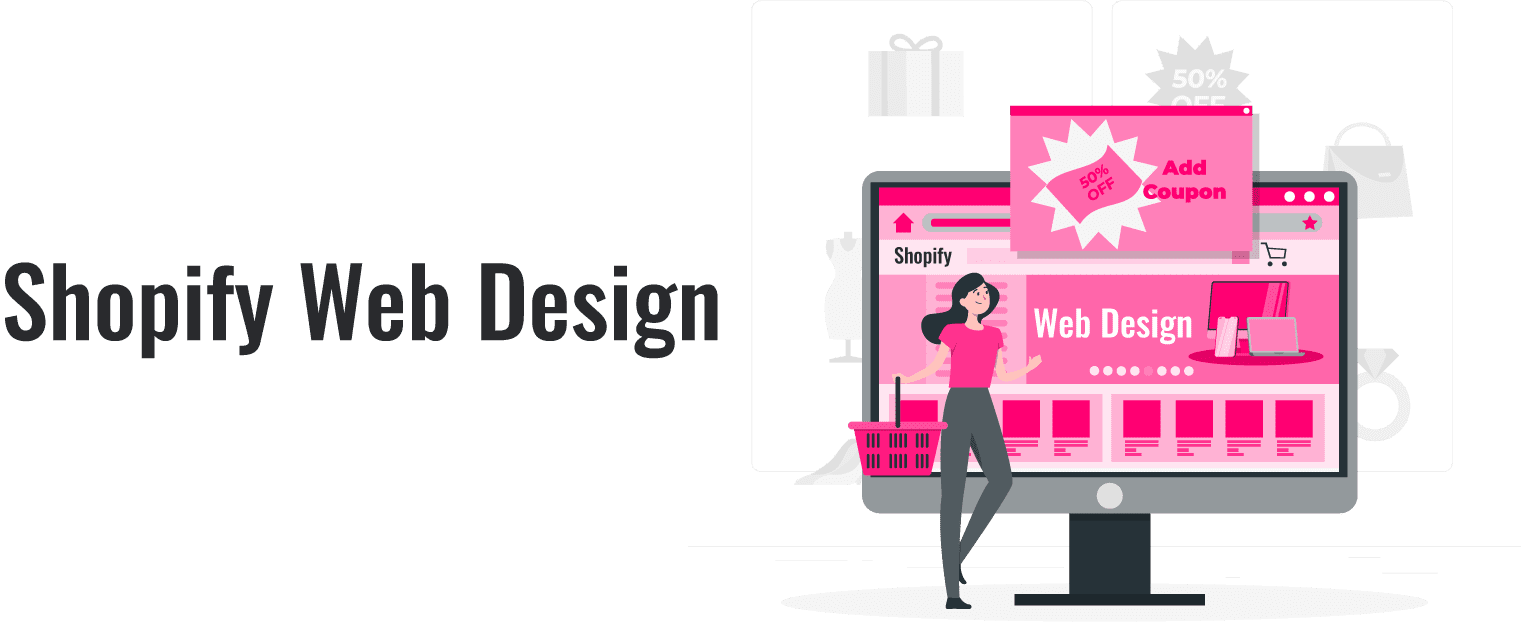Table of Contents
As you may already know, turning website visitors into customers is essential for online business success. Good web design is critical to getting visitors’ attention and keeping them interested, ultimately leading to more sales.
Moreover, In the world of e-commerce, Shopify is a standout platform that provides the tools and features needed to improve your website’s conversion rate. Excitingly, In this blog post VKommerce (shopify web design agency) will cover best practives of Shopify web Design to convert visitors into customers. Lets Drive in!
Unleashing the Power: 8 Best Practices of Shopify Web Design
For design shopify website, You must use proven strategies if you want the best results and want visitors to become paying customers. Hence, Here are eight plans to include in your Shopify web design. These strategies will help you increase your conversion rates.
However, understanding and engaging your target market is paramount when it comes to captivating your audience. You should Conduct thorough research to identify the following:
- Your Ideal Customers
- Customers preferences
- Customers pain points.
In Addition, Tailor your web design and messaging to resonate with their needs and desires. Moreover, Use language that speaks directly to your target market and conveys the value your products or services offer.
1. Captivating Your Audience: Understanding & Engaging Your Target Market
Firstly, you must understand their needs and motivations to captivate your audience effectively. Then, Conduct market research, analyze demographics, and collect customer feedback.
Therefore, captivate your target audience with exciting content, attractive visuals, and persuasive prompts when you fully grasp them. Additionally, establish a bond by demonstrating your comprehension of their issues and the remedies you offer.
2. Enchanting Experiences: Crafting an Engaging User Journey
Secondly, Crafting an engaging user journey is essential to guide your visitors toward making a purchase. Moreover, Ensure your website is easy to navigate, with intuitive menus and a clear information hierarchy.
Additionally, Implement eye-catching visuals, concise product descriptions, and user-friendly interfaces. Use smooth transitions and interactive elements to create a seamless browsing experience.
3. Mastering the Art of Seduction: Compelling Product Presentation
Thirdly, your product presentation must be irresistible to entice visitors into becoming paying customers.
- Use high-quality images, videos, and descriptive content that showcase your products in the best light.
- Highlight the unique features, benefits, and value they offer.
- Incorporate customer reviews and testimonials to build trust and credibility. – Create a sense of urgency or exclusivity through limited-time offers or limited stock notifications.
4. The Path to Purchase: Streamlining the Checkout Experience
Moreover, Streamlining the checkout experience is crucial for minimizing cart abandonment and maximizing conversions. Simplify the purchase process by reducing the steps required to complete a transaction. Fortunately, Implement a guest checkout option for first-time customers and offer multiple convenient payment methods. Hence, display shipping costs, return policies, and trust badges to alleviate any concerns or doubts during checkout.
5. Conversion Alchemy: Unleashing the Power of Optimization Techniques
Additionally, Optimization techniques are vital to continuously improve your website’s performance & increase conversions. Hence, Conduct A/B testing to compare the following:
- Different design elements
- Calls-to-action
- Product positioning
- Bounce rates
Moreover, Implement exit-intent pop-ups or abandoned cart recovery emails to recapture lost sales. Then, Continuously monitor and refine your website based on user behaviour data to optimize conversion rates.
6. Dominating the Search: Maximizing Visibility with SEO Strategies
Moreover, increasing how often your website appears in search engines is crucial to attracting more visitors without paid ads. It would be beneficial to perform keyword research to find relevant search terms. Then, include them in your website’s content, meta tags, and URLs.
Additionally, make sure to optimize your product pages for search engines. It means providing unique descriptions that include keywords. Design Shopify store By creating informative blog posts and optimizing them for SEO. Moreover, you can establish your expertise and attract more visitors to your website by custom shopify web design.
7. Decoding Success: Monitoring and Analyzing Performance
For design shopify website, Keep an eye on important performance metrics to measure how well your website design and conversion tactics are working. You can use tools like Google Analytics to follow visitor actions, conversion rates, and sales data.
Find areas where you can improve and use data to make intelligent choices that enhance your website’s performance. As a result, regularly assess and optimize your strategies by analyzing the data you gather.
8. Trustworthiness Unveiled: Building Trust and Credibility
Lastly, Building trust and credibility is vital for converting website visitors into paying customers. Moreover, Incorporate trust elements such as:
- Customer testimonials
- Security seals
- Industry certifications
Additionally, display your contact information, return policies, and customer support options. Implement a robust privacy policy to reassure visitors that their personal information is safe. Hence, Engage with customers through social media and promptly address any concerns or inquiries.
Conclusion
Converting website visitors into paying customers is a continuous task. You need to monitor, test, and improve your web design to stay ahead of competitors and provide great user experiences that lead to conversions. Design Shopify store By dedicating yourself and implementing these best practices. Unlock the full potential of your Shopify website and succeed in e-commerce by custom shopify web design.
In summary, applying these eight best practices to your Shopify web design can significantly improve your ability to turn website visitors into paying customers. Following these practices can establish a solid and impactful e-commerce presence.
FAQs
Q1: How long does it take to see results from implementing these best practices?
A: Generally, The timeframe for seeing results may vary depending on various factors such as your industry, target market, and the current state of your website. However, with consistent implementation of these best practices and continuous optimization, you can start to see improvements in your conversion rates within a few weeks to a few months.
Q2: Can I implement these strategies on platforms other than Shopify?
A: While these best practices are highlighted in the context of Shopify web design, they can also be applied to other e-commerce platforms. Hence, The fundamental principles of effective web design and conversion optimization remain the same, regardless of your platform. Adapt these strategies to fit the capabilities and features of your chosen venue.
Q3: Is hiring a professional web designer to implement these practices necessary?
A: Not necessarily, While working with a professional web designer can provide valuable expertise and save you time, you can implement many of these practices on your own.
Hence, Platforms like Shopify offer user-friendly interfaces and templates that allow you to customize your website without extensive technical knowledge. However, if you have the resources, partnering with a skilled web designer can help you achieve a more polished and tailored design.
Q4: How to design Shopify website?
A: To design a Shopify website, you follow these steps:
1. Choose a Shopify theme: Browse through the Shopify theme store and select a visually appealing and functional theme that aligns with your brand and products.
2. Customize the theme: Use the built-in customization options to personalize your website. Customize the colours, fonts, layout, and add your logo and branding elements.
3. Add products and categories: Organize your products into categories and upload them to your Shopify store. Provide detailed descriptions, high-quality images, and set pricing and inventory details.
4. Optimize for conversions: Implement practical call-to-action buttons, straightforward navigation, and a user-friendly checkout process. Ensure your website is mobile responsive, loads quickly, and offers secure payment options.
Remember to continuously test and optimize your website based on user feedback and analytics to improve the shopping experience and drive sales.










